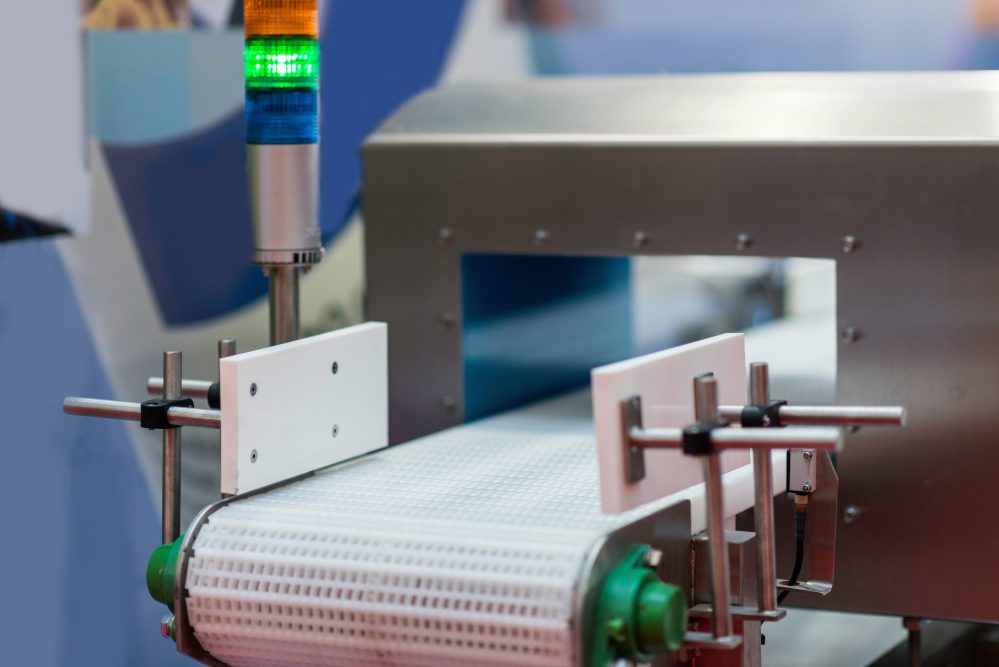Major food recalls are a reminder of how critical detection technology is for a food facility — and lately, it seems we’re being reminded far too often. There are a lot of variables when it comes to x-ray and metal detection systems: What should you buy? How much protection is enough? How do you maximize performance? Let’s start by understanding the difference between x-ray and metal detection technology.
Metal detection vs. x-ray: pros and cons
Metal detection systems are generally less expensive and last longer than x-ray systems, but they are sometimes limited due to product composition and other issues that can lead to false positives with wet or salty products or with metallic packaging. Plus, there’s the obvious: They can only detect metals.
On the other hand, x-ray systems can detect most solid particles including metal, glass, bone and plastic. However, in most cases, they cannot detect aluminum or wire contaminants, and although they’ve come down in price, they’re still more expensive than metal detectors and cost more to maintain.
So should you opt for x-ray or metal detection? Every food facility today should have both, but where and to what degree depends on your product, processing and HACCP plan.
Redundancy and line independence
Every plant is unique, of course, but two crucial stages for detection are:
- Incoming raw materials — to prevent any contaminated raw ingredients from entering the processing lines in the first place
- Post-packaging — to ensure no contaminants that may have been introduced in the processing are shipped out to the consumer
When it comes to detection systems, the more “checkpoints” you have, the greater the probability of catching a contaminant. Redundancy can keep potential contaminants from slipping under the radar and triggering a costly recall.
Adding more x-ray detection mid-process can help you pinpoint the source of the problem in the event of contamination. If you establish line independence by having an x-ray on each line, you can narrow down a contaminant to an individual line. This can save you a lot of product and money compared to having to throw away or recall everything because you don’t know the exact source of contamination. If you can detect an issue with the raw material early in the process, you can eject it from the system before wasting packaging and other ingredients.
What else your x-ray system can do for you
When we talk about x-ray systems in food facilities, we tend to think of detecting foreign objects, but this technology has a variety of applications:
- Verifying third-party product — By scanning raw materials provided by an outside vendor, you can confirm that the composition is accurate and that there are no contaminants present before you ever introduce that material into your facility.
- Fat-to-lean analyzing — Since x-rays can detect differences in density, you can use your system to measure the fat-to-lean ratio when blending certain meat products.
- Packaging seal contamination — X-ray systems can detect if liquid or meat interfered with the seal during the packaging process. Seal contamination can create a leak which could diminish shelf-life or ruin product outright.
- Confirm unique packaging requirements — Since x-ray equipment can serve as a vision system, you can program it to confirm that certain packaging elements, such as labels or oxygen scavengers, are properly included before the product leaves the facility.
So why do recalls still happen?
With all this advanced technology, it makes you wonder why so many recalls still make headlines.
Sure, there are cases in which external factors are to blame. For example, you can produce salami for a supermarket deli and do everything right, but the problem happens once the product has left your facility: metal shavings from a meat slicer get into the product, a product isn’t stored at the right temperature, etc. A recall isn’t always the manufacturer’s fault, but often times it is.
Ultimately, the “mystery” of why recalls still happen comes down to how dedicated manufacturers choose to be when it comes to food safety and detection. There are USDA minimums in place, but they’re just that: minimums.
One of my mentors once told me, “If you’re not confident that the product is safe enough to feed to your own children, then don’t send it out the door.”
This is often a matter of company culture — and I don’t just mean the nice words in your “corporate philosophy” or “core values,” it’s about putting your money where your mouth is. Going above and beyond the minimum means adding redundancies, investing in proper detection technology and implementing it at various stages of processing.
Maximizing the performance of your equipment
When you invest in any piece of equipment, it’s important to fully educate your staff and keep up with preventative maintenance so the equipment operates at its peak parameters all the time. This is especially true with x-ray systems, which involve radiation and require routine calibration.
Teaming up with an experienced and objective consulting partner can ensure you invest wisely in equipment best suited for your needs. The money you spend up front on proper detection equipment is always going to be less costly than a major recall and potential lawsuits. Your detection systems are essentially the last line of defense between your product and a disastrous recall. It’s the last place you should be cutting corners.
Looking for more insight into what detection solutions are best for your particular facility? Email me your questions at foodforthought@stellar.net
Note: A version of this post first published in the January-February issue of Meat Packing Journal.



